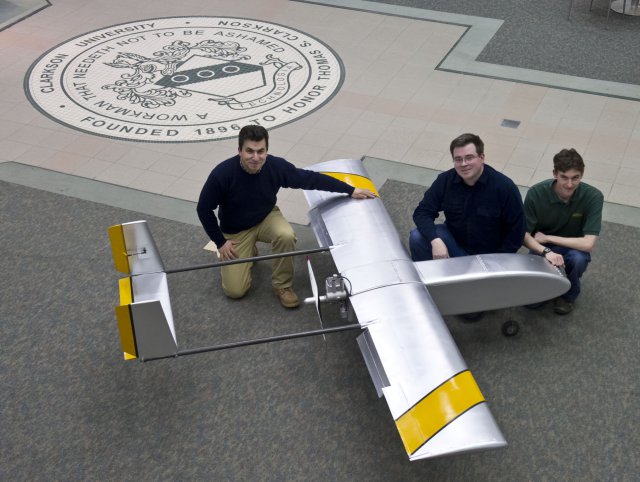A Clarkson University research team, led by Mechanical & Aeronautical Engineering Professors Pier Marzocca, Suresh Dhaniyala and Lin Tian, is readying its unmanned aircraft, the Clarkson RAVEN (Research Aerial Vehicle for Experimental Needs), to acquire wind turbulence data.
The three Clarkson faculty, along with colleagues from six institutions and companies in the United States and Europe, have been awarded $700,000 by the U.S. Department of Energy (DOE) to study Lake Erie wind resources and to perform a detailed evaluation of remote sensing technologies for wind resource estimation.
Clarkson will work with lead institution Indiana University and principal investigator Rebecca J. Barthelmie, as well as with Case Western Reserve University, Arizona State University, Risoe Danish Technical University, Sgurr Energy and Horizon Wind Energy LLC.
“We are very excited about the opportunity to work with colleagues from IU and other institutions and with private industry in leading the way for wind resource estimation and offshore wind energy studies in U.S. and overseas,” says Marzocca. “The consortium of public and private partners is proposing a strategy for lowering the cost and improving the accuracy of offshore wind energy assessments using a range of measurement technologies, including optical remote sensing, satellite imagery, and our unmanned aircraft. We expect to develop techniques that will become standard for assessing wind resources prior to developing new offshore wind farms.”
The international team will map offshore wind and turbulence fields and develop best practices for integration and operation of different instrumentation, including lidar technologies, meteorological towers, UAS measurements, and satellite-derived products.
The Clarkson UAS will acquire horizontal and vertical wind and turbulence profiles at a low altitude. The three-dimensional view of wind characteristics obtained from this project will provide a greater understanding of the variability of wind and turbulence in offshore and coastal areas at heights, scales and precision relevant to wind energy projects. The data obtained from this study will be used to design wind turbines and wind farms, and to optimize energy capture, reduce the cost of electricity.
The award was one of 41 offshore wind power research and development projects that received funding from the DOE. The awards, which totalled $43 million, are designed to speed technical innovations, lower costs, and shorten the timeline for deploying offshore wind energy systems.
Source: Clarkson University

